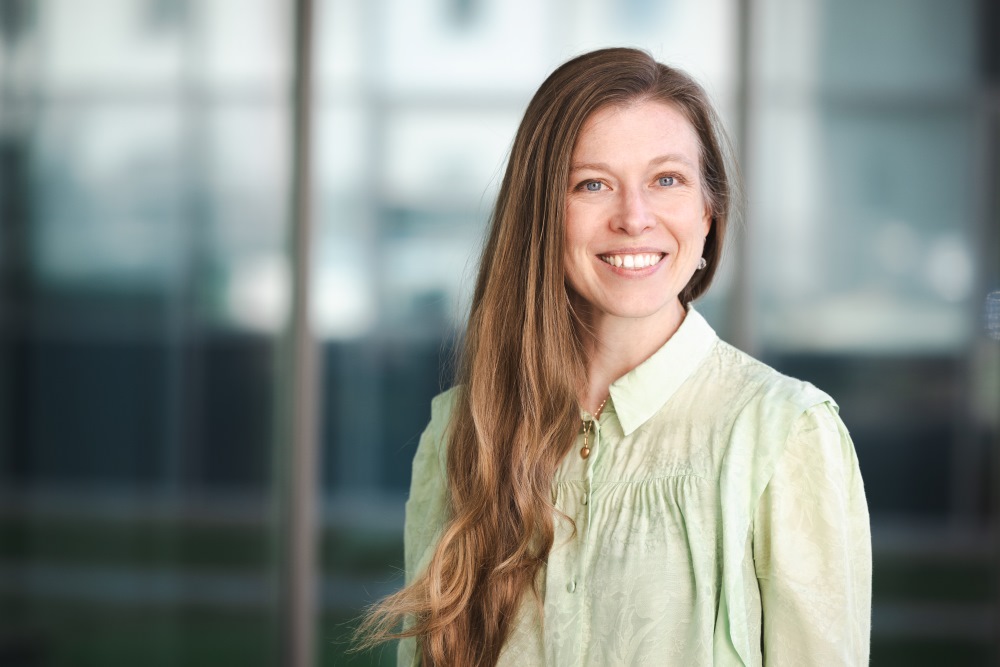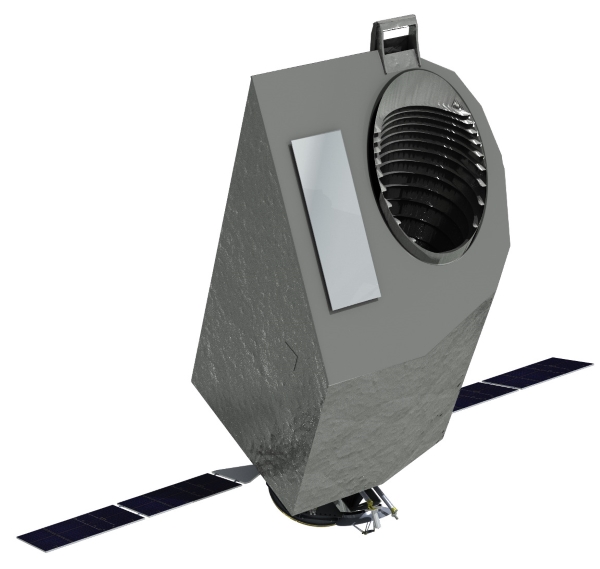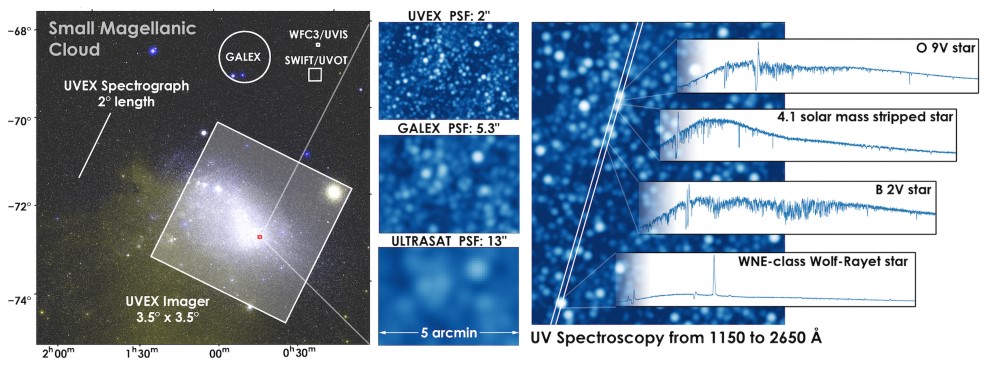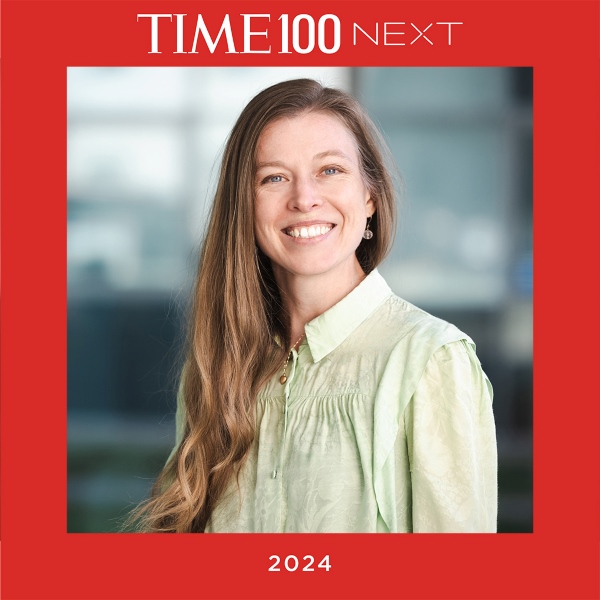October 2, 2024
Ylva Götberg Named to TIME100 Next
ISTA Assistant Professor Ylva Götberg named to TIME’s list of 100 emerging leaders
Astrophysicist Ylva Götberg, who joined the faculty of the Institute of Science and Technology Austria (ISTA) in 2023, was named to the 2024 TIME100 Next list. An expansion of the TIME100 list of the most influential people in the world, TIME100 Next highlights 100 emerging leaders who are shaping the future of business, entertainment, sports, politics, health, science, activism, and more. Find out how Götberg envisions the future of her field.

A rising star from the Institute of Science and Technology Austria (ISTA) made the 2024 TIME100 Next list. TIME100 Next highlights emerging leaders from around the world who are shaping the future and defining the next generation of leadership in their fields.
One of the first astrophysicists to join ISTA a year ago, Assistant Professor Ylva Götberg helped set the cornerstone of this discipline at the young and rapidly growing Institute. Götberg specializes in studying the evolution of massive binary stars. Binary stars are pairs of stars locked together in an eternal waltz with dramatic consequences. These stars can come so close to one another that interaction becomes inevitable: One can strip its companion of its outer layers or even engulf it.

As a young group leader, Götberg focuses on teamwork, collaboration, diversity, and mutual respect. “In my group, I want to promote a culture of collaboration with my team members, moving away from rigid supervision. Young researchers come to science through different paths, from different backgrounds, and with different goals. I want to be able to provide my team members with an experience that benefits them.”
Missing stars and a new space telescope
In a recent publication in Science, Götberg described the first observation of a population of “missing stars” that shed light on a type of supernovae—stellar explosions—that astrophysicists could not explain. Until this discovery, it was as if these hydrogen-poor supernovae appeared out of nowhere. Götberg is also part of a large international collaboration that developed NASA’s new UV space telescope, UVEX, which is scheduled for launch in 2030. Filling a decades-long gap in extensive ultraviolet data, UVEX will explore how galaxies and stars evolve and create a community resource dataset of UV light in the entire sky.


Pushing scientific boundaries with theory-driven research
Götberg is a young group leader who obtained her PhD from the University of Amsterdam in the Netherlands in 2019. She joined ISTA in September 2023, following her experience as a NASA Hubble Postdoctoral Fellow at the Carnegie Observatories in Pasadena, California. Götberg is driven by questions like where to take science next, which theory will open up unforeseen possibilities, or even what could make scientists’ little castle of theories fail. “We must be able to rebuild our castle of scientific theories and strengthen its walls so it can sustain the incoming impacts from new findings, such as new telescope surveys and space missions.”
Although scientific discoveries are largely viewed as impactful and exciting, Götberg, a theoretician at heart, highlights the importance of reinforcing scientific foundations with a solid structure of testable theories. “A theory may feel less exciting than a discovery, but rigorous theoretical work is necessary to develop science. I find it especially exciting when I manage to create a theory so refined and elaborate that I can test it to prove or disprove it. I also find it very humbling—and exciting—when a testable theory I created turns out to be wrong. Exciting, because by knowing that a theory failed, we can take a step forward, reorient, and start navigating in the right direction,” Götberg says.
A leadership style that focuses on interpersonal relations
On top of her stellar scientific achievements, Götberg is developing various leadership skills. She has been a member of multiple review panels, evaluating student fellowships and support systems, and served on telescope allocation committees. At ISTA, Götberg is growing her research group by setting the focus on interpersonal relationships within the team: “I want to be an approachable mentor. As a team leader, I want to be flexible, available, and versatile to find effective ways to cooperate with my group members. I am conscious of the challenges and want to reach each team member and help them reach each other.”
Inspiring future scientists to explore their passions and interests
Researching stars might in and of itself be an inspiring endeavor. However, Götberg is also conscious of the biases in her research field: “I hope to inspire young people, especially women who don’t dare to go into STEM, just because it’s outside the norm. Such biases are a loss for science, as we end up losing potentially brilliant future scientists who choose a different career path.”
Götberg is persuaded that physics and astronomy need to diversify by opening up to new researchers from various backgrounds and cultures. Working in different environments helped her understand that the more diverse the team, the more included, and the happier the team members feel, which leads naturally to scientific progress. “Diversity favors inclusion and mutual respect and allows each team member to understand their own difference from the others. Accepting every person’s difference, starting from oneself, makes people more welcoming,” she says.

Nomination to TIME100 Next, a sense of responsibility
Götberg feels honored and grateful to be named to the TIME100 Next list. She sees this as a form of recognition for young, female scientists. She is also aware that being on this list of 100 emerging leaders comes with the responsibility of representation and inspiration. “I’d like to highlight that the people you work with matter most. The team around you is what will make you succeed. Science is really about people, and working in close collaborations allows me to be more productive and have a positive mindset,” she says. “I was delighted to know that TIME100 Next picked me together with my collaborator Maria Drout, with whom I have co-first authored the Science paper on the missing star population. Maria and I work very well together and are lucky to be supported by an excellent team of researchers. I’m very pleased that we made it to this list together.”



